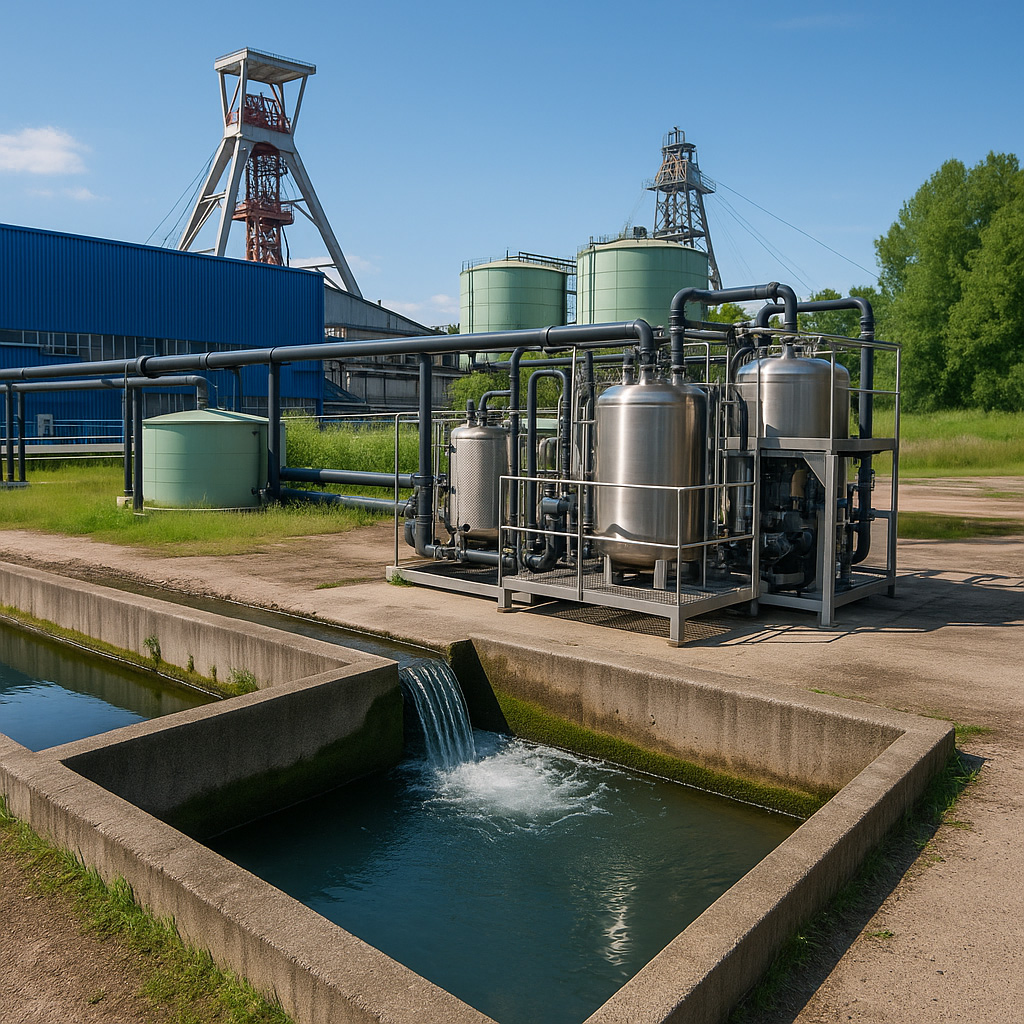TREATMENT AND MANAGEMENT OF MINE WATERS
Mine waters are characterized by high salinity, which is a common problem. Direct discharge into the environment is the main cause of excessive river salinity. To protect the natural environment, these waters must be treated. Due to their physico-chemical composition as well as the large quantities of extracted water, these problems are often unsolvable because the commonly available and applied technologies are ineffective. Membrane systems, although they allow recovery of a significant amount of high-quality water, generate wastewater with very high salinity since the salt load remains the same. Moreover, prior to membrane treatment, pre-treatment of mine water would be required to remove certain parameters that damage the membranes. These techniques must therefore be ruled out from the outset. The only way to solve the problems associated with mine water discharge is the application of ion-exchange technologies.
System assumptions:
Environmental protection has driven the search for new, more effective treatment methods and, consequently, modern technological solutions. The use of ion-exchange techniques by our company allows us to change the perception of wastewater and opens up new approaches to waste management.
The mine water treatment system developed by our company effectively enables its complete recovery, as well as the utilization of captured and recovered contaminants. Our designed system for closing industrial water loops complies with programs for water conservation and mineral management, without the need for their discharge into wastewater. The wastewater treatment technology applied uses an unconventional method of highly efficient removal of contaminants, both at high and low threshold concentrations. The use of modern equipment and technological systems ensures that the contaminants present in the water, once recovered, become fully valuable products.
In the treatment process, huge volumes of water are obtained, at the level of current total extraction.
The volume of unit wastewater is marginal and does not exceed 5%. The water can optionally be used for industrial purposes as well as for drinking. Any form of utilization is possible. It should be emphasized that this is a volume of water sufficient to supply a medium-sized city or a large industrial plant.
According to the design assumptions (depending on water composition), the recovered mineral compounds constitute a fully valuable product, for example in the form of recovered rare metals. The scale of the project (depending on the amount of water) is such that a new production line will enable achieving the position of a significant producer.
Intended use of water:
Mine water can be treated to industrial water quality as well as purified to drinking water quality. The use of ion-exchange techniques is significantly cheaper than Reverse Osmosis, and the amount of wastewater is minimal. Wastewater from Reverse Osmosis (concentrate) should not be discharged into the environment, as it poses a significant threat and may result in high penalties. According to our technology, wastewater after treatment becomes a product.
Operational assumptions:
The costs of carrying out water treatment and purification processes will be comparable to other methods that are far less effective or even completely ineffective. For water production itself, running the process is highly cost-effective.

METAL RECYCLING
The possibility of recovering metals from mine waters using our technology is unlimited. Selective capture allows us to treat wastewater as a source of raw material, provided the scale is appropriate. Wastewater can thus be utilized rather than, as in other conventional treatment techniques, adding to sludge loads. Very often, the elemental composition of mine waters (such as barium and strontium content) completely disqualifies the use of Reverse Osmosis, while ion-exchange techniques are indispensable here, enabling not only selective recovery but also the creation of a marketable product.
The water treatment technology we designed is intended not only for mine waters but can also be applied to all industrial rinse waters contaminated with metals. These include industries related to mechanical metal processing, electroplating, electrochemistry, aluminum passivation, tannery effluents, the dye industry, and more. The possibilities for metal recycling in these processes are not only effective but also allow wastewater treatment to be conducted in such a way that the problematic effluent becomes a product. In contrast, standard wastewater management systems assume collection by composition category followed by disposal. The disposal of metal-contaminated wastewater is extremely labor-intensive.
As a result of disposal, sludges are generated that must be stored, separated, and transported (often incurring high costs and penalties).
It should be emphasized that metal recovery and desalination of mine waters are processes not only necessary for environmental protection but also economically justified, as they allow the use of wastewater contaminants as raw materials for production.
Significant savings are achieved by eliminating the need to build complex wastewater discharge systems and retention tanks for their separation.
If the presented technology proves to be interesting and necessary for you, we are ready to establish cooperation.



